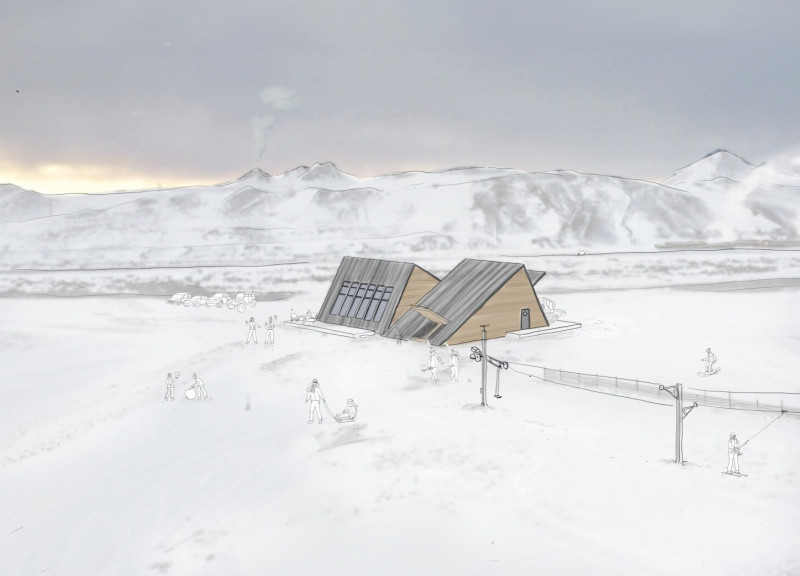5 key facts about this project
The design of the project encapsulates a multifunctional space that accommodates [insert specific functions such as residential, commercial, or communal uses], ensuring versatility and adaptability for its users. The layout is meticulously organized to facilitate seamless movement between different areas while providing inviting public spaces that encourage social engagement. Each component of the design reflects a careful consideration of how people will interact within the space, fostering a sense of belonging and community cohesion.
A key element of the project is its materiality. The choice of materials plays a significant role in addressing both aesthetic and functional aspects. A combination of concrete, steel, glass, wood, and natural stone has been employed to construct a robust yet aesthetically pleasing structure. Concrete is utilized for its durability and structural capability, while steel frames add a sense of lightness and flexibility to the overall design. Extensive use of glass creates transparency, allowing natural light to permeate the interior and dissolve the boundaries between indoor and outdoor environments, thus enhancing the overall spatial experience.
The integration of natural elements into the building’s design is particularly noteworthy. This architectural project emphasizes the connection between the interior spaces and the exterior landscape, achieved through carefully positioned windows and openings. Views of the surrounding area are optimized, not only enhancing the aesthetic quality of the interior but also reinforcing the building’s relationship with nature. As a result, occupants can enjoy a continuous interaction with the environment, promoting a sense of peace and well-being.
Unique design approaches are evident throughout the project, with innovative strategies employed to improve energy efficiency and sustainability. Passive solar design elements have been integrated, allowing the building to harness natural energy and minimize its ecological footprint. The strategic orientation of the building maximizes sunlight exposure during the winter months while providing adequate shade in the summer, thus reducing reliance on artificial heating and cooling systems. Rainwater harvesting systems may also be incorporated, reflecting a commitment to sustainable practices and responsible resource management.
In addition to environmental considerations, the project thoughtfully incorporates elements that encourage social interaction. Open communal spaces are designed to foster gatherings and community events, enhancing the social fabric of the area. The spatial planning prioritizes accessibility, ensuring that all segments of the population can fully engage with the facilities provided, regardless of their physical capabilities.
The project stands out not only for its architectural integrity but also for its responsiveness to the local culture and context. The design embodies a rich narrative that reflects the surrounding community’s identity and character. Local architectural traditions and styles influence the overall aesthetic, blending contemporary elements with historic references that resonate with residents and visitors alike.
To delve deeper into the architectural nuances of this project, readers are encouraged to explore the project presentation, which includes comprehensive architectural plans, sections, and details that illustrate the various layers of design thought and intent. Engaging with these elements can provide a broader understanding of the architectural ideas and design strategies that underpin such an ambitious and community-oriented project. By examining these rich resources, one can appreciate the thoughtful craftsmanship and innovative solutions that define this architectural endeavor.


























